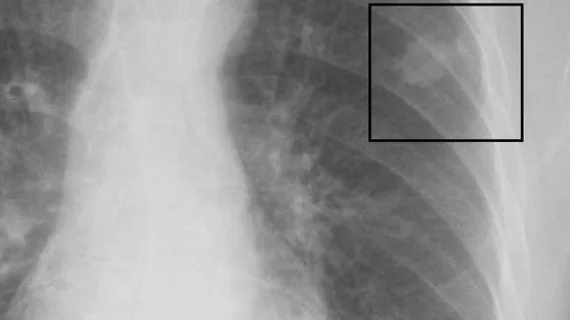Enhanced dual-source dual-energy CT (DECT) can help differentiate invasive adenocarcinomas from preinvasive lesions which appear as pure ground-glass nodules (pGGNs), according to a small study published in the American Journal of Roentgenology.
Invasive pulmonary adenocarcinomas (IPAs) and lesions that appear as pGGNs can require different treatments, including surgery or therapeutic options in some cases. But, as Yang Yang, of the Affiliated Zhongshan Hospital of Dalian University in China, and colleagues wrote we lack reliable tools to accomplish this goal before or during surgery.”
“If we can obtain diagnoses of pGGNs before surgery, we may be able to improve management, including selecting the best therapeutic strategy,” the authors added. “Thus, it is critical to accurately discriminate preinvasive lesions from IPAs appearing as pGGNs.”
Yang and colleagues retrospectively enrolled 39 patients with 53 pGGNs who underwent enhanced dual-source DECT. All pGGNs were pathologically confirmed and classified as either preinvasive lesions or IPAs. Traditional CT features of pGGNs were analyzed on unenhanced images and quantitative parameters were measured on iodine-enhanced images of dual-source DECT in three planes.
When looking at traditional CT features, lesion size and unenhanced CT attenuation value were the only two to differentiate between preinvasive lesions and IPAs. There were “significant” differences visible in attenuation on virtual images (VHU) and the modified normalized iodine concentration (NIH). Intra- and interobserver agreement was excellent for the virtual images.
After multivariate logistic regression, the team found larger lesion size and higher modified NIC to be significant differentiators of IPAs and preinvasive lesions. ROC curve analysis revealed modified NIC (AUC of 0.92) to be a better indicator than lesion size (AUC of 0.71) for differentiating the two lesions.
There were several limitations, including a small study size and the researchers noted that larger trials would be needed to confirm their results.
“In conclusion, in pGGNs, a lesion with a modified NIC value of more than 0.29 can be a very specific discriminator of IPAs from preinvasive lesions, and IPAs can be accurately and reliably differentiated from preinvasive lesions using enhanced dual-source DECT and three-planar measurements,” the authors wrote.

